In developing the visual direction for this MOOC, we focused on four of the elements of Christine’s vision:
- Content comes alive
- Bring the past into the present
- Questions that pertain to today, with an analytical edge
- Plenty of visuals/media to enrich the videos
For set and production design, this lead us to the concept of a Lively Luther Museum.
One of our talented student designers, Jason, created these mock-ups:

We explored the possibility of a busier backdrop, but ultimately decided to simplify the timeline to minimize visual competition for the audience’s attention.
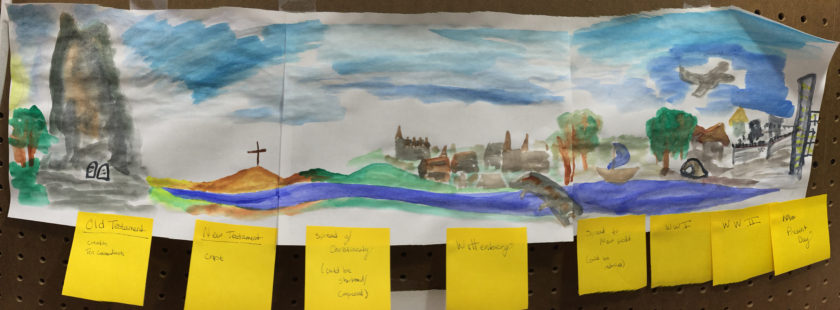

To fulfill this vision, production design became key. We worked closely with Christine to determine which elements of the story should be pulled out into 3D space as props.
The Wittenberg Castle Church
Martin Luther nailed his 95 theses to the door of this church, making it a key visual element to the story. To create a 3D version of the church, I started by creating the basic structure out of foamcore and cardstock, estimating the proportions based on photographs.
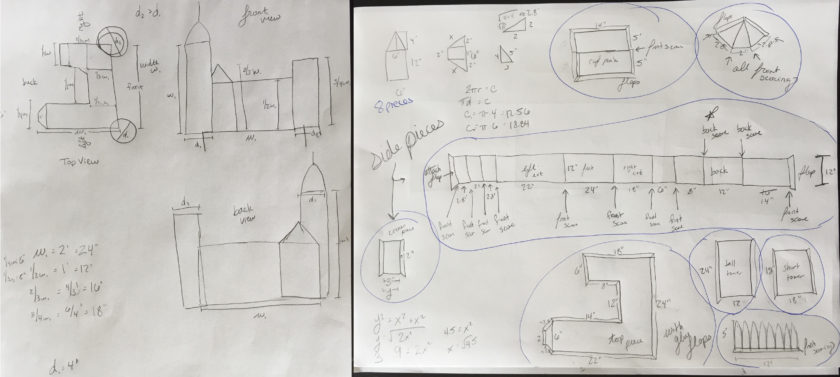
The first foundation structure turned out to be much larger than we needed, so I halved each dimension and made a new foundation. I then covered the structure with celluclay, a paper maché-like substance, and let it dry for days. One challenge was that the damp celluclay made the cylindrical towers less stable. Unlike the rest of the base structure, the towers were made of cardstock, not of foamcore.
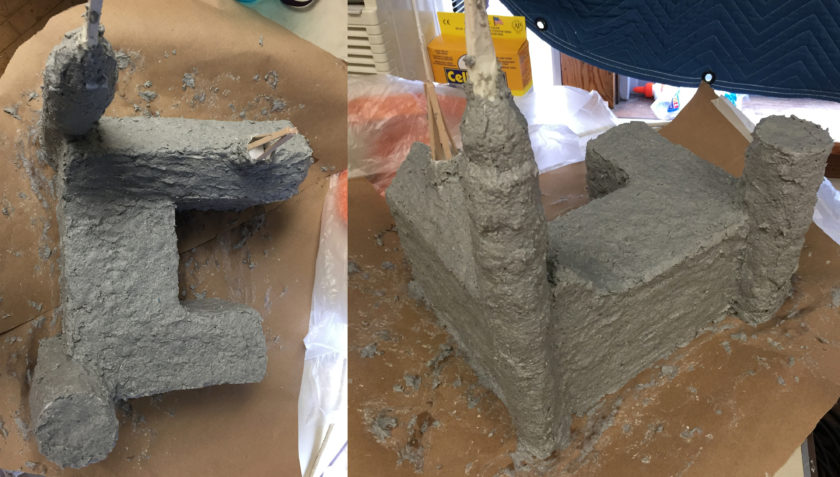
Once the castle was dry, all that remained was painting and adding the door. This required more acrylic paint than expected because the celluclay absorbed moisture rapidly and the texture of the clay, while great for replicating stonework, had many bumps and points that needed to be adequately covered. The paint didn’t need to be exact because the castle would primarily appear in the background.
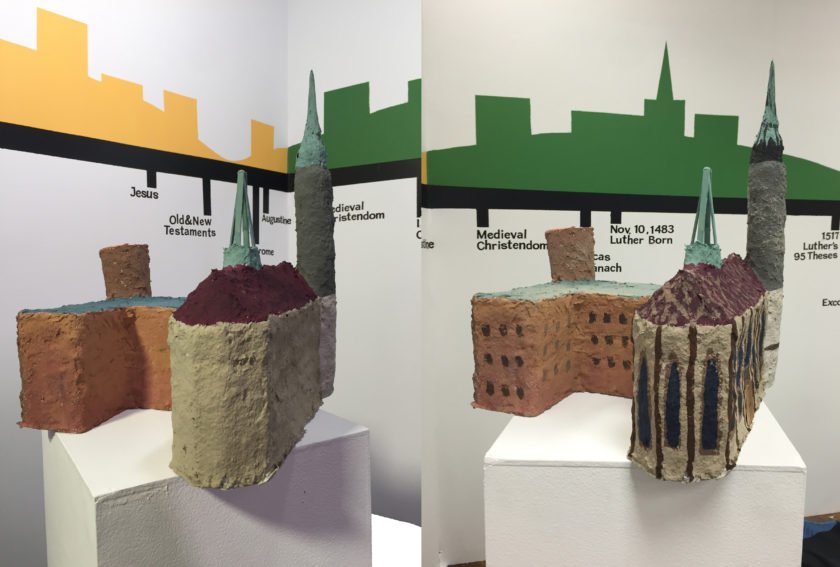
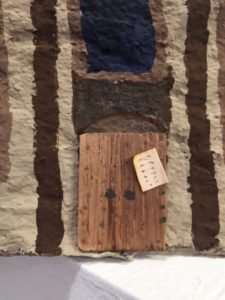
The last touch was to add the door, made of stained balsa wood and gold paint, with a tiny document (tea-stained paper, ink) glued to the front. The whole door was affixed with hot glue.
Wittenberg Castle Church Door, stand-alone prop
Aaron made a beautiful door replica to which we affixed a tea-stained copy of Luther’s 95 theses.
The door had a foamcore base with strips of balsa wood hot glued on top. Wood stain was applied to deepen the color add variation to the grain. Two textured wooden strips were painted and glued to the middle at the intersection of the double doors. Aaron used wooden ornaments, painted gold, and metal rings for the door handles. Dented metal tacks completed the door. This piece became a key prop in the background of many of Christine’s videos, perfectly mirroring the significance of Luther’s actions in history.
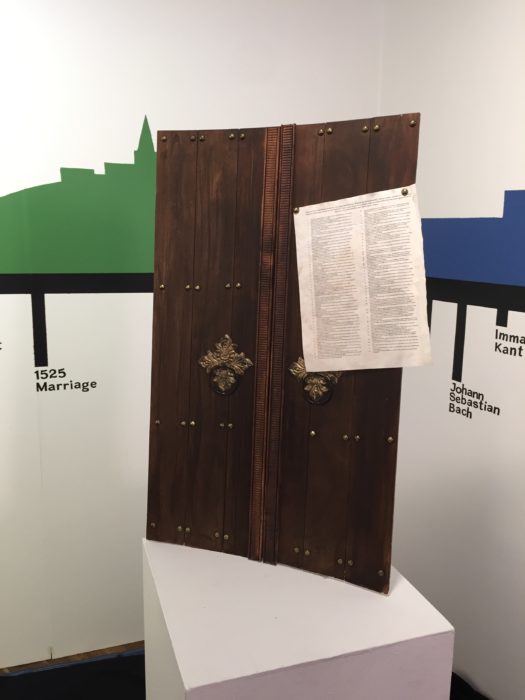
Other Props
These two primary props were supplemented by music notes (painted foamcore), an indulgence (tea-stained paper, ink, crayon wax), a cross (painted wood), and swords (painted foamcore) as called for by the content of the MOOC. The music notes and swords were hung with fishing line that disappeared into the background of the videos.

Much of the prop creation happened before production began, but as with any creative process, we were inspired during production to create additional elements, for instance the Two Swords. It was extremely rewarding for us to create all of these props, and to see them add something of value to the project as a whole.
The course, Luther and the West, is a free massive open online course launching October 3rd, 2016.
